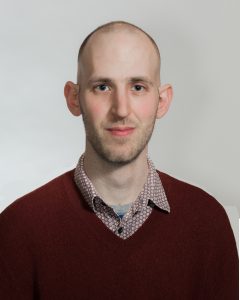Are you dreaming of attending the Stanford Graduate School of Business? With an acceptance rate that generally hovers around five percent, it can certainly feel like a fantasy. Fortunately, Kirsten Moss is here in our latest Admissions Director Q&A to explain how you can make your Stanford MBA dreams a reality.
Prior to her current role as Assistant Dean of MBA Admissions and Financial Aid at Stanford GSB, Kirsten developed tools to assess leadership potential as a consultant with Egon Zehnder and coached senior executives in the technology, private equity, entertainment, healthcare, and manufacturing sectors. Earlier in her career, she was the Director of Career Services and the Director of Admissions and Financial Aid at Harvard Business School. Kirsten has an AB in economics, government, and sociology from Harvard College and an MBA from Harvard Business School. She has a Doctorate of Psychology from William James College where her research examined how to assess transformational leadership during selection interviews.
Following our conversation earlier this year, Kirsten offers more insights into what makes admissions essays stand out, how the interview process works and who the program is looking for, along with a lot more.
Clear Admit: What’s the single most exciting development, change, or event happening at Stanford in the coming year?

Kirsten Moss: In mid-September, Stanford GSB will be expanding our diversity and inclusion initiative led by Senior Associate Dean, Sarah Soule. This initiative will help raise awareness and support for students, staff, faculty and alumni and aligns to Stanford University’s goal of ensuring a culture of diversity, inclusion, equity, and access.
Stanford University has a new Diversity and Inclusion Innovation Fund, through which students, faculty and staff can apply for grants from $1,500 to $20,000 to advance the diversity of our community and foster inclusion.
We are in our second year of offering classes, such as Equity by Design: Building Diverse and Inclusive Organizations, and just reaffirmed our commitment to a need based financial aid system to ensure that anyone can attend Stanford GSB, regardless of their financial situation. Watch our website for additional information.
CA: What is the one aspect of your program that you wish applicants knew more about?
KM: Some candidates think of us as a school only for those interested in technology or entrepreneurship. Nothing could be further from the truth. Yes, we have the lion’s share of unicorns and start-ups in our backyard and have been teaching about entrepreneurship and innovation for decades, but our program is designed so you can focus on your interests and development needs.
We start by asking, “what do you value and why would others follow you?” We use a variety of teaching methods, including experiential learning, so you have the opportunity to develop your influence capability, your point of view, and the skills to lead in whatever industry you choose.
CA: Walk us through the life of an application in your office from an operational standpoint. What happens between the time an applicant clicks “submit” and the time the committee offers a final decision (e.g. how many “reads” does it get, how long is each “read,” who reads it, does the committee convene to discuss it as a group, etc.)?
KM: Once applications are in, we read them. We then start inviting candidates to interview. These candidates are those whom we identify as the strongest prospective students for our program based on their written applications. Once the interview is complete, the interviewer provides an assessment, which the Admissions Committee considers in combination with the written application. The Admissions Committee then communicates our admission decisions to the applicant on the relevant deadline for the round.
CA: How many essays would you wager you’ve read in your tenure at Stanford? Thinking about the essays that have been the most memorable, is there something they have in common?
KM: Thousands. The most memorable essays capture the candidate’s “essence.” They are essays that no other candidate could have written because they are so specific to your journey. Our essay asks, “What matters most, and why?” To really answer this prompt well, candidates must reflect on their internal values and how these have been shaped by their experiences, perspectives, relationships, and/or opportunities.
CA: How does your team approach the essay portion of the application specifically? What are you looking for as you read the essays? Are there common mistakes that applicants should try to avoid? What is one key thing they should keep in mind as they sit down to write?
We have two essays. The first, as previously mentioned, asks about your values and sheds light on what motivates you. In this essay, you share with us what is the wind in your sails. The second essay asks, “Why Stanford? Describe your aspirations and how your Stanford GSB experience will help you realize them.” In this essay, we try to understand what you hope to do. We also pay attention to what is most compelling to you about the GSB experience and how our program can help you bridge the gap between where you are now and where you want to go.
Separate from the essays, we have added an optional short answer where we ask you to think about a time you have created a positive impact, whether in professional, extracurricular, academic, or other settings. What was your impact and what made it significant to you or others? You may share up to three examples with us. We ask this question to give you an opportunity to tell us what you have done that is meaningful to you. We hear about some of your achievements from your recommenders, but they may only know about your contributions in one specific role or organization. We want you to tell us in your own words about makes you most proud.
A strong application helps us understand your values, your aspirations, and your impact. The key thing to keep in mind as you write is to tell us your story, not the one you think we want to hear. I promise you that that story will be far more captivating to us.
CA: Could you tell us about your interview process? Approximately how many applicants do you interview? Who conducts the interview (students, admissions officers, alumni) and what is the nature of the interview (blind, non-blind)?
KM: We interview approximately 2-3 candidates for every seat in the class. Alumni conduct the majority of the interviews in the candidate’s current location, and the interviews last approximately 45 minutes. Alumni interviews also give applicants an opportunity to get to meet members of our community. The alumni interviewers are provided candidates’ resumes; however, they do not have access to their applications.
Since our interviews are behavior-based, we focus on understanding your past behavior – both what you have done and how you have done it. To prepare for your interview, think about times in the past few years when you have been effective or proud of your efforts. What was the situation? What action did you take? What was the result? Also, come prepared with questions for your interviewer, so you can learn about his or her experience at Stanford GSB.
CA: Anything else you would like to add?
KM: Do not take yourself out of the running because you believe you do not have the “right” profile. There is no right profile. We are looking for individuals who aspire to change lives, change organizations, and maybe even change the world. If you have ever developed a new insight, taken initiative, persisted through a tough challenge, or invested in the growth of others, tell us. We want to know.






